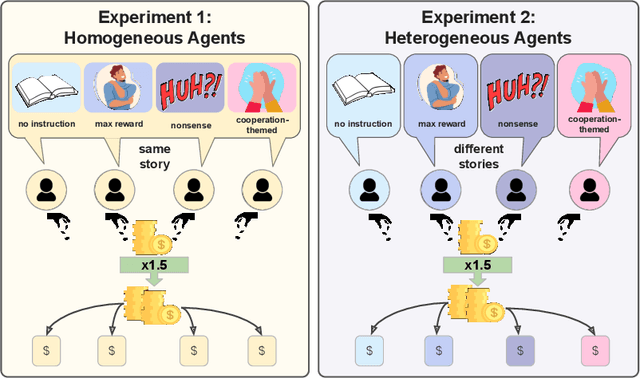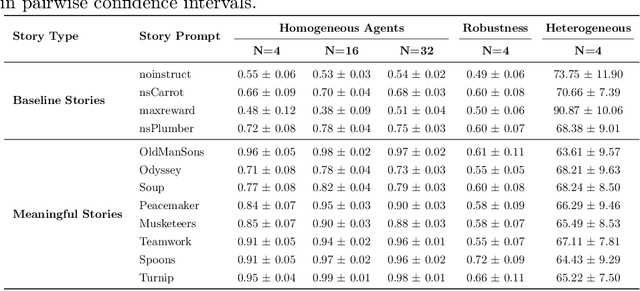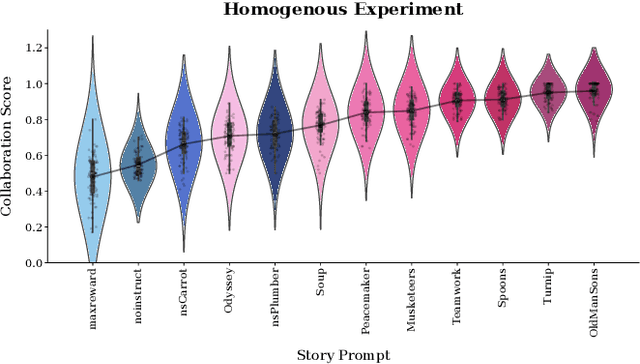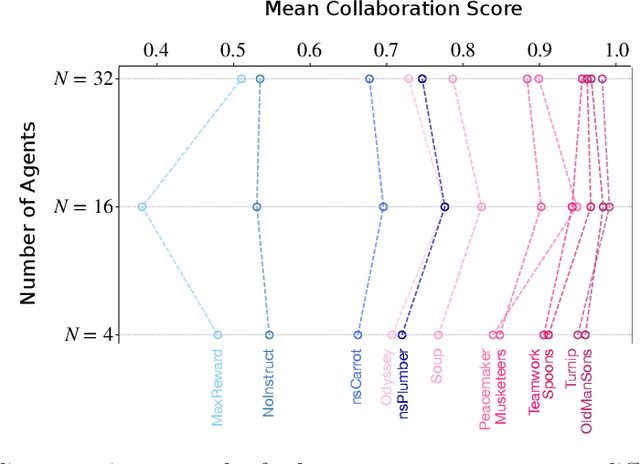David A. Selby
The Power of Stories: Narrative Priming Shapes How LLM Agents Collaborate and Compete
May 08, 2025



Abstract:According to Yuval Noah Harari, large-scale human cooperation is driven by shared narratives that encode common beliefs and values. This study explores whether such narratives can similarly nudge LLM agents toward collaboration. We use a finitely repeated public goods game in which LLM agents choose either cooperative or egoistic spending strategies. We prime agents with stories highlighting teamwork to different degrees and test how this influences negotiation outcomes. Our experiments explore four questions:(1) How do narratives influence negotiation behavior? (2) What differs when agents share the same story versus different ones? (3) What happens when the agent numbers grow? (4) Are agents resilient against self-serving negotiators? We find that story-based priming significantly affects negotiation strategies and success rates. Common stories improve collaboration, benefiting each agent. By contrast, priming agents with different stories reverses this effect, and those agents primed toward self-interest prevail. We hypothesize that these results carry implications for multi-agent system design and AI alignment.
Neural Spatiotemporal Point Processes: Trends and Challenges
Feb 13, 2025Abstract:Spatiotemporal point processes (STPPs) are probabilistic models for events occurring in continuous space and time. Real-world event data often exhibit intricate dependencies and heterogeneous dynamics. By incorporating modern deep learning techniques, STPPs can model these complexities more effectively than traditional approaches. Consequently, the fusion of neural methods with STPPs has become an active and rapidly evolving research area. In this review, we categorize existing approaches, unify key design choices, and explain the challenges of working with this data modality. We further highlight emerging trends and diverse application domains. Finally, we identify open challenges and gaps in the literature.
 Add to Chrome
Add to Chrome Add to Firefox
Add to Firefox Add to Edge
Add to Edge